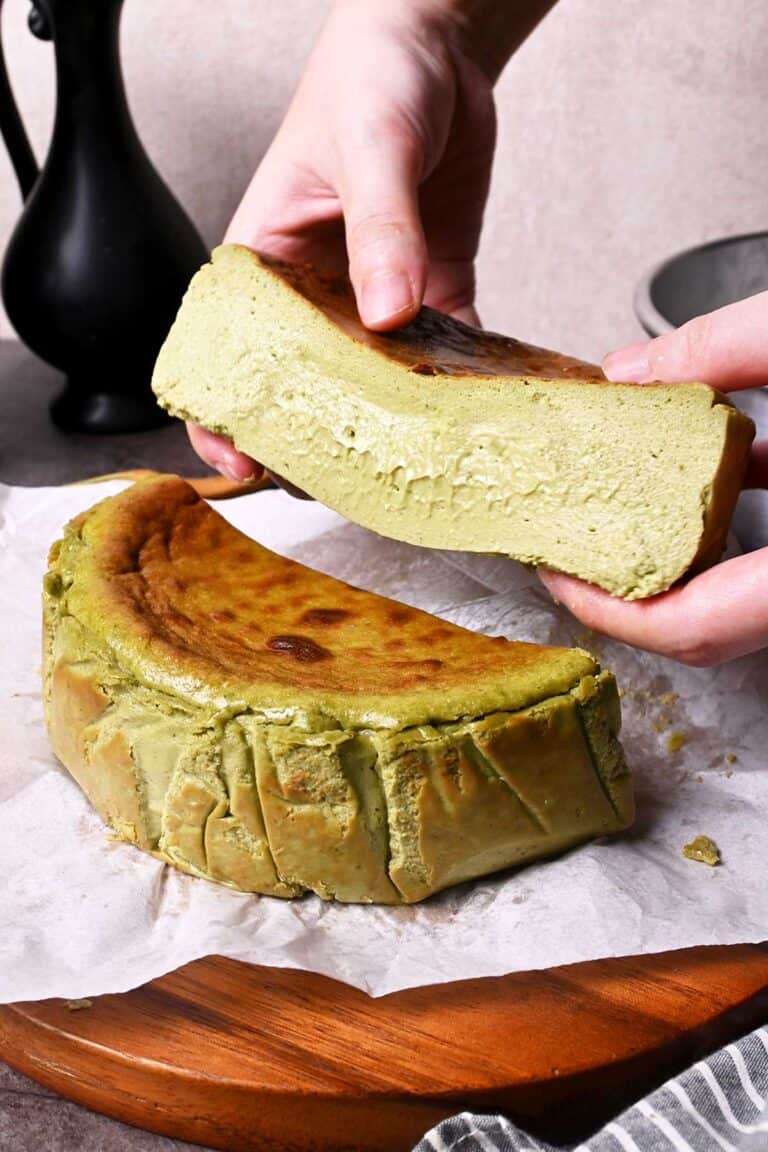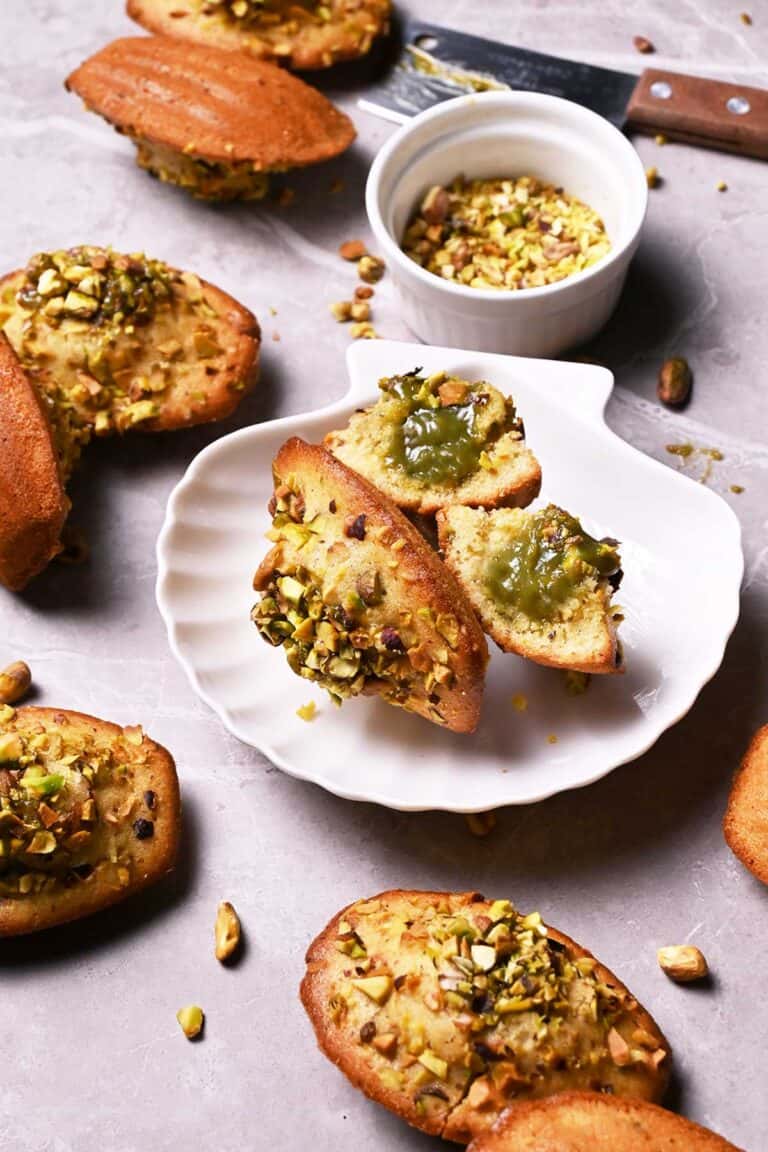Iced Cendol Dawet (Pandan Jellies with Coconut Milk and Palm Sugar Syrup)
This post may contain affiliate links. Please read my disclosure policy for details.
Sweet, cool, and refreshing Iced Cendol Dawet made from pandan jellies, coconut milk, and palm sugar syrup. It is a summertime favorite that will be sure to cool you down and satisfy any sweet cravings.

The weather is quickly warming up and there is nothing more refreshing than pouring an ice-cold glass of drink on a scorching hot afternoon. Today’s recipe, Iced Cendol Dawet is one of the most beloved drinks or desserts in Southeast Asia, especially in Indonesia. It makes such a perfect refreshing treat to combat the hot weather.
What Is Cendol Dawet?
Cendol is an iced sweet dessert that contains droplets of green jellies, coconut milk, and palm sugar syrup. It is commonly found in Southeast Asia.
Cendol is also known as:
- Chè ba màu in Vietnam
- Lot chong in Thailand
- Dawet in Java
- Mont let saung in Burma
The origin of cendol itself is not clear. However, one suggestion is that cendol originated in Java, Indonesia as dawet. In Java, dawet refers to the whole concoction of cendol green jellies, usually made from rice flour or tapioca, coconut milk, and palm sugar syrup. It is traditionally served without ice. However, additional ice cubes or shaved ice is now commonly added to this dessert drink since the ice had become readily available.
Cendol, however, has developed differently in different countries, so the name cendol can be a little confusing. In Indonesia, the term cendol only refers to the green worm-shaped green jellies. Meanwhile, dawet refers to a dessert with green jellies, coconut milk, and palm sugar syrup. This is different from the cendol in Malaysia and Singapore where various ingredients such as sweetened red beans and sweet corn are served together with the green jellies in a bowl.
Soft vs Chewy Cendol
In Indonesia, cendol is usually made from rice flour or mung bean starch (hunkwe flour) as the main ingredients. The process of making cendol from rice flour and mung bean starch is the same, but the end result of the two may have different textures. Therefore, before making the recipe, you should know what kind of cendol you want.

- Rice Flour. In Indonesia, cendol is traditionally made using rice flour with a little bit of tapioca flour to give the chewy texture of the cendol. This cendol has a softer texture with less chewiness compared to the one made from mung bean starch.
- Mung Bean Starch. Cendol made from mung bean starch has a firmer, chewier, and crunchier texture compared to the one made with rice flour. However, cendol made from pure mung bean starch can be too hard, so cornstarch or tapioca flour is typically added to make it more tender.
Tools to Make Cendol
In Southeast Asia, there are special tools or machines used to create the cendol strands. If you plan to make this recipe, you will need one of these tools below to make cendol.
- Cendol Press. This is my favorite tool to make cendol since it is easy to work with. It has two parts, the container with holes on the bottom and the presser to push the cooked cendol out through those holes into noodle strands.
- Potato Ricer. A potato ricer works great as a cendol press. Choose the right size of the opening so the strands will not be too thin or thick.
- Colander or Perforated Tray. You can use any tools with holes such as a colander or perforated tray. Simply place the cooked cendol dough and press it through the holes using a spatula or scrapper. That would do the trick.
- Strainer Ladle. You can also use a ladle that has holes in them. Cedol made with a strainer ladle is much shorter, but it does not alter the taste in any way.
- Plastic Bag or Zip-Lock Bag. If you don’t have any tools above, you can put the dough into a plastic bag. Cut off the tip of the bag and press the batter through it. This is my least favorite tool because the cooked dough is hot and it may burn your hand when holding the plastic bag. It also takes forever to finish it.
Substitution for Suji and Pandan Leaves
In Indonesia, the green color of cendol is traditionally created by extracting the suji and pandan leaves. Suji leaves (Dracaena angustifolia) look quite similar to pandan, but they do not have a sweet fragrant aroma like pandan leaves and they give darker natural green color to foods than pandan leaves do. Meanwhile, pandan leaves are added to give cendol more flavor and aroma.
It may be quite hard to get suji leaves outside of Southeast Asia. If you can’t find some, just substitute the suji leaves with the same amount of pandan leaves. Just remember that the cendol made with pure pandan leaves extract will be lighter in color.
However, if you really can’t find both suji and pandan leaves to make the natural green food coloring, you can completely omit them and add a few drops of store-bought pandan extract instead. You can also use green food coloring, but I really recommend using pandan extract so your cendol will be more flavorful and aromatic.
Additional Toppings
In Indonesia, other than basic ingredients of green jellies, palm sugar syrup, and coconut milk; Iced Cendol Dawet might be served with additional toppings, such as:
- Diced jackfruit
- Tapai (fermented sweet cassava)
- Durian
- Grass jelly
- Chocolate condensed milk
More add-in ingredients from other countries:
- Sweet red bean
- Sweet corn
- Attap seed
- Agar-agar cubes
- Glutinous rice tapai
- Ice cream
- Split mung beans

More Indonesian Desserts
While you are here, check out also these Indonesian dessert recipes!
- Klepon (Pandan Glutinous Rice Balls with Palm Sugar Filling)
- Putu Ayu (Steamed Pandan Coconut Cake)
- Biji Salak (Sweet Potato Balls with Palm Sugar Porridge and Coconut Milk)
- Pandan Gula Melaka Butter Cookies
- Pandan Coconut Ice Cream

Ingredients
- 15 suji leaves
- 5 pandan leaves
- 3 cups (720 ml) water
- 1/4 tsp salt
If using Rice Flour
- 2/3 cup (100 gr) rice flour
- 1/2 cup (65 gr) tapioca starch
If Using Mung Bean Starch
- 1/2 cup (60 gr) hunkwe/mung bean starch
- 1/2 cup (60 gr) cornstarch
Palm Sugar Syrup
- 10.5 oz (300 gr) palm sugar block/gula Jawa/gula Melaka
- 3/4 cup (180 ml) water
- 2 pandan leaves, knotted
Coconut Milk
- 3 cups (720 ml) coconut milk
- 1/2 tsp salt
- 3 pandan leaves, knotted
Instructions
Coconut Milk
- In a medium pan, add coconut milk, salt, and pandan leaves. Heat on low heat and stir constantly until the mixture boils. Turn off the heat and cool completely before serving it. (Coconut milk tends to separate when you heat it on high heat and not stirring it properly)
Palm Sugar Syrup
- Shave the palm sugar block with a knife
- In a small pan, add shaved palm sugar, water, and pandan leaves. Heat on low-medium heat until the mixture boils. Turn off the heat and cool completely before serving it.
Cendol
- Cut suji and pandan leaves with a scissor into 1-inch/2.5 cm pieces. Blend the cut leaves with 1 cup (240 ml) water in a food processor or blender until smooth.
- If using rice flour. Sift rice flour, tapioca starch, and salt into a pan. Add strained suji and pandan extract into the pan and stir the mixture until well combined with no lumps. Then, add the remaining 2 cups (480 ml) of water and mix until well incorporated.
- If using mung bean starch. Sift mung bean starch, cornstarch, and salt into a pan. Add strained suji and pandan extract into the pan and stir the mixture until well combined with no lumps. Then, add the remaining 2 cups (480 ml) of water and mix until well incorporated.
- Heat the pan over low heat and stir constantly until the mixture thickens and becomes translucent.
- When still hot, transfer the dough into the cendol maker or potato ricer. Squeeze out the paste over the top of the ice bath, ensuring the cendol noodles are submerged in the ice water. If you are using a strainer with large holes, use the back of a spoon to push it down.
- Leave the cendol in the cold water for 15 minutes so they will firm up nicely
Assemble
- Pour the palm sugar syrup into serving glasses. Add ice cubes if desired. Portion out the cendol into each glass. Then, pour in coconut milk. Serve immediately.






